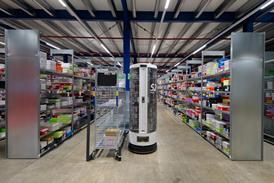Birkenstock targets running specialty shops with its footbed

In the U.S., Birkenstock is targeting running specialty stores by offering its signature sandals with an orthopaedic footbed as recovery footwear for athletes after their workout. The move is part of the German brand’s diversification strategy in a key market.
SIGN-IN if you are already a subscriber of Shoe Intelligence.

Subscribe today
Your membership benefits:
- Unlimited access to shoeintelligence.com - all insight, analysis and statistics 24h/day available online
- Our executive edition of Shoe Intelligence (Digital Edition) - the must-read for all decision-makers in the industry
- Weekly E-mail Briefing from the Chief Editor with the lastest analysis and most important industry developments
- Case studies and best practices on business challenges
- Guest chronicles, interviews, insights from industry experts and leaders that are shaping the future of the industry
- Unlimited access to shoeintelligence.com - all insight, analysis and statistics 24h/day available online
- Powerful search and access to over 16,500 articles and analyses in the archive
- Personal library to save articles and track your key content
- Organisation-wide access across offices, people and devices
To continue reading this article REGISTER NOW.


